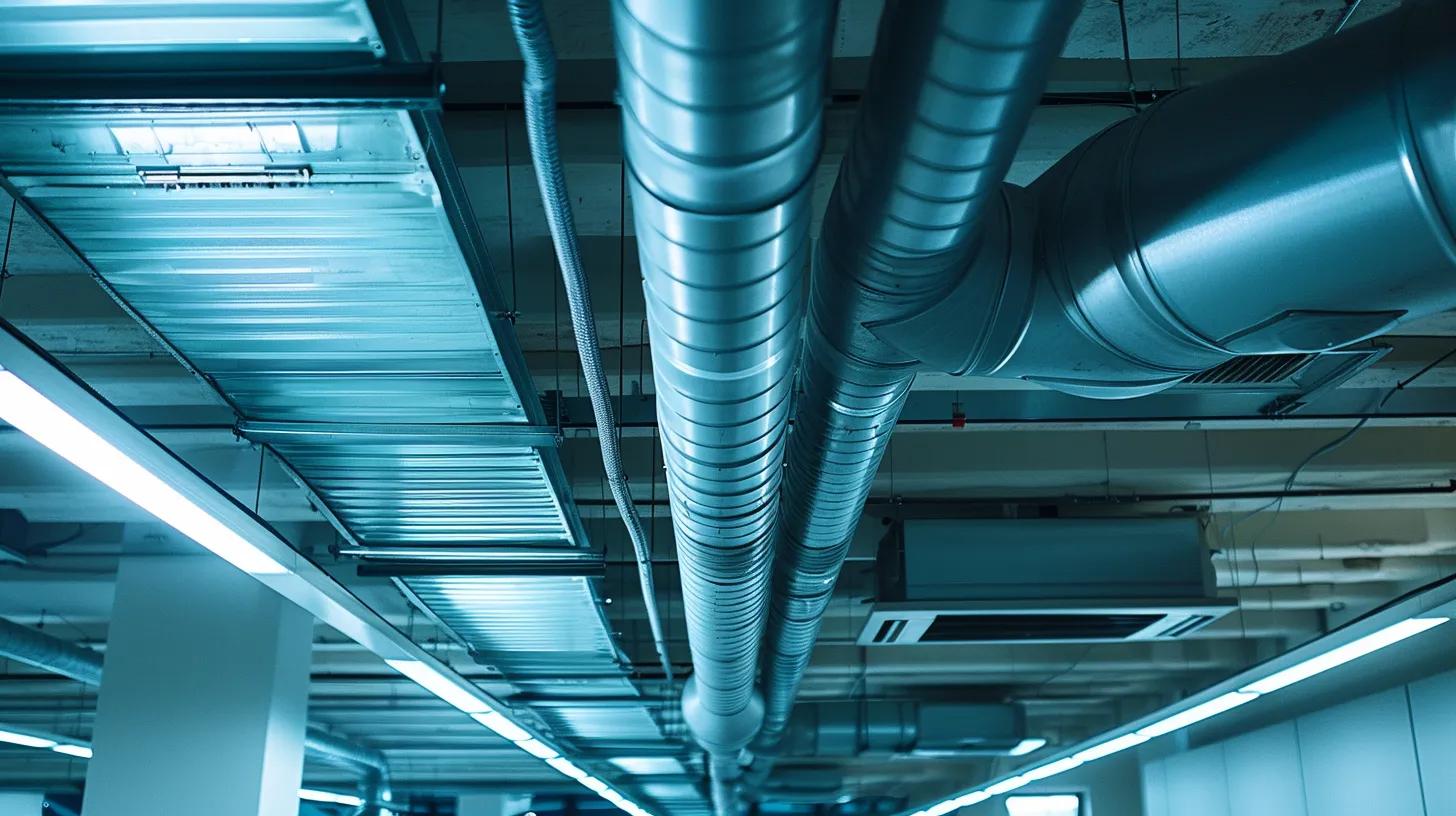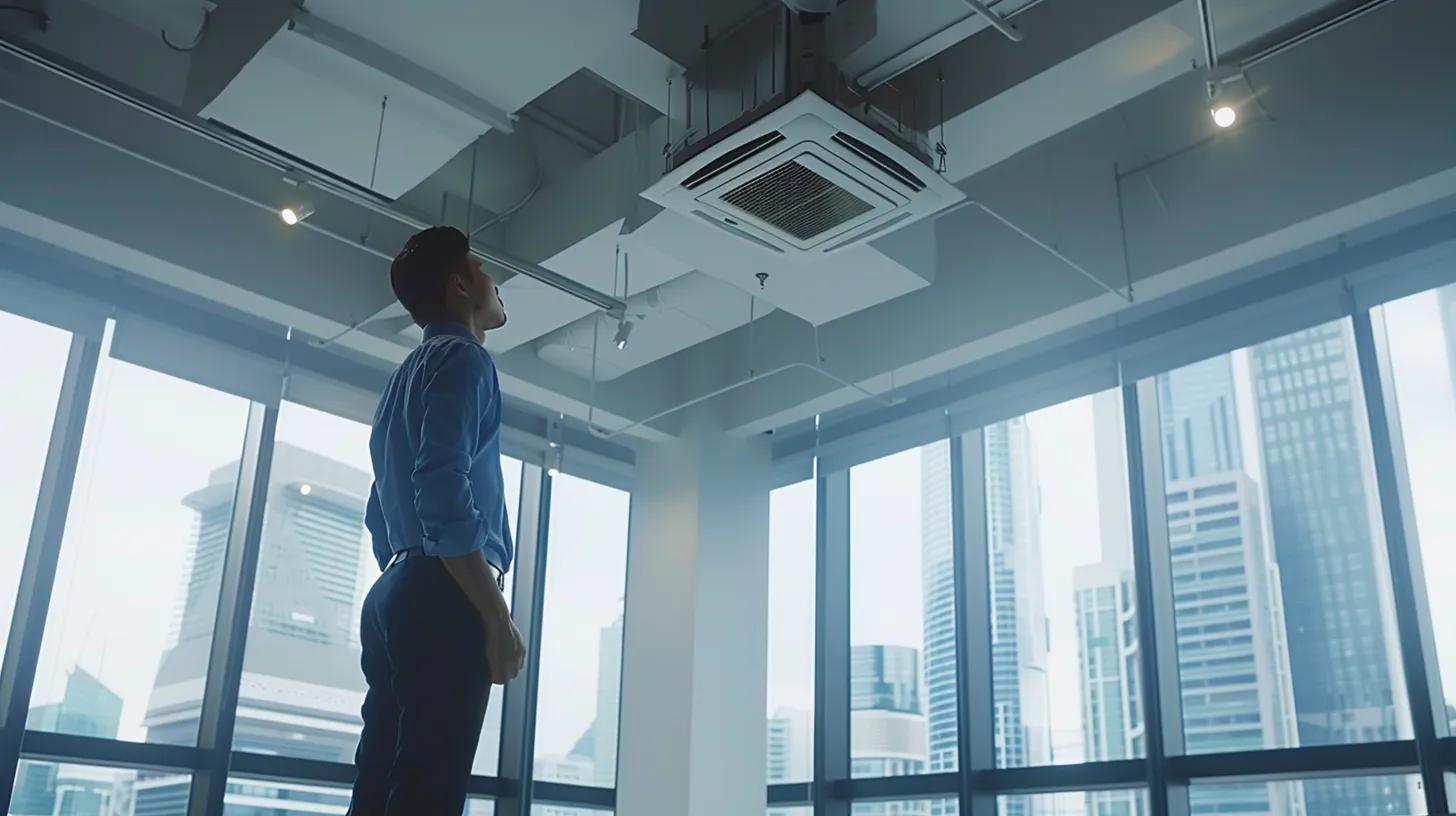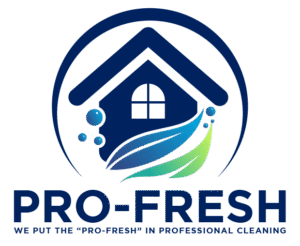
Air Duct Cleaning Benefits for Dust Reduction
Air duct cleaning plays a critical role in maintaining pristine indoor environments by substantially reducing dust, allergens, and contaminants. For example, air duct cleaning in houston is a highly recommended practice in areas where dust, pollen, and mold spores are pervasive. Dust, pollen, mold spores, and other microscopic particles accumulate in HVAC systems over time, compromising air quality and potentially triggering respiratory issues and allergies. This article explains how uncleaned ducts contribute to household dust, the impact of professional cleaning services, and the long-term benefits of a cleaner duct system.
Key Takeaways
- Regular air duct cleaning reduces accumulated dust, allergens, and contaminants, improving indoor air quality.
- Professional methods remove debris from ducts, visibly decreasing surface dust throughout the home.
- Clean air ducts help lower allergy symptoms and improve breathing by reducing airborne particulates.
- Routine maintenance and proper HVAC filter replacement support long-term dust reduction.
- Cleaner ducts enhance HVAC performance, airflow, and overall energy efficiency.
Understanding How Air Ducts Accumulate Dust and Allergens

Dust and allergens enter air ducts through open windows, doors, and ventilation inlets. Particulate matter from environmental pollution, skin flakes, pet dander, and pollen gradually builds up within the HVAC system.
The Path of Dust Particles Within Your HVAC System
During normal operation, air currents draw dust into the system where particles collide with duct surfaces. Over time, these particles accumulate in layers that are difficult to remove without specialized equipment, affecting overall indoor air quality.
Common Irritants Trapped Inside Ventilation Networks
Contaminants such as pollen, soot, and microbial byproducts get trapped in ductwork, especially in older systems with deteriorated sealing. These irritants can serve as breeding grounds for mold and bacteria when moisture is present.
Indicators Your Air Ducts Contribute to Household Dust
Homeowners may notice increased dust on surfaces, frequent cleaning needs, and sudden allergy symptoms after HVAC operation—a sign that ducts are harboring excess dust and allergens.
How Uncleaned Ducts Affect Indoor Air Purity
Dust-laden ducts contaminate recirculated air, creating a cycle of reintroducing allergens into living areas. This not only triggers respiratory issues but can also reduce the efficiency of air purifiers and cause lingering odors.
Sources of Contaminants in Your Home’s Ductwork
Contaminants originate from outdoor pollutants, indoor activities such as cooking, and even from HVAC components that collect biological growths if exposed to moisture, leading to a complex mix of dust and allergens.
The Direct Impact of Air Duct Cleaning on Dust Reduction
Professional duct cleaning reduces the dust load by effectively extracting accumulated debris, thereby lowering the overall indoor dust concentration.
Removing Accumulated Debris for a Less Dusty Home Environment
Specialized tools and high-powered vacuums remove even deeply embedded dust. Homes with cleaned ducts often see a marked reduction in surface dust.
Professional Methods for Complete Dust Elimination From Ducts
Techniques such as rotary brushes, high-powered vacuums with HEPA filtration, and chemical sanitizers ensure that stubborn deposits are removed completely, leaving ducts free from contaminants.
Observing a Clear Decrease in Surface Dust Post-Cleaning
After cleaning, homeowners frequently notice visibly cleaner ducts and a reduction in dust around floors and furniture, easing daily cleaning routines.
Air Duct Cleaning Benefits for Dust Reduction Throughout Your Property
Cleaner ducts ensure that the air circulating in all rooms carries fewer dust particles, leading to a consistent improvement in indoor air quality throughout the home.
How Cleansed Ducts Minimize Airborne Particulate Matter
Reduced particulate matter in clean ducts helps lower allergy triggers and respiratory irritants, supporting overall health and long-term benefits.
Achieving Significant Allergy Alleviation Through CleanerAir Ducts

Cleanerair ducts reduce airborne allergens such as dust, pollen, and pet dander, which in turn minimizes the severity and frequency of allergic reactions.
Lowering Airborne Triggers for Allergy Symptoms
With fewer irritants in the air, sufferers of allergies may experience less nasal congestion, fewer sneezing fits, and reduced eye irritation.
Fostering a Healthier Indoor Atmosphere for Allergy Sufferers
Improved air circulation free of allergens creates a more comfortable environment, contributing to better respiratory health and an overall improved quality of life.
Accounts of Improved Allergy Conditions After Duct Service
Testimonials often mention fewer asthma attacks, reduced sinus infections, and minimized allergy symptoms after professional duct cleaning.
The Connection Between Duct Pollutants and Breathing Discomfort
By removing duct pollutants that contribute to airflowcontamination, patients typically experience smoother breathing and fewer respiratory issues.
Reducing Pet Dander and Pollen Concentrations via Duct Cleaning
Effective duct cleaning targets specific allergens like pet dander and pollen, lowering their concentration and providing relief for sensitive individuals.
Enhancing Overall Home Air Quality by Servicing Your Ductwork
Regular duct service enhances overall indoor air quality by improving airflow, thermal efficiency, and the performance of air purifiers and filters.
Eliminating Stale Smells Trapped Within the Ventilation System
Cleaning ducts removes dust and microbial buildup that cause musty odors, leading to a fresher indoor atmosphere.
Facilitating Fresher Air Movement Throughout Your Residence
Clear ducts support efficient air exchange, ensuring that every room benefits from consistently fresh air and improved well-being.
The Function of Clean Ducts in a Healthier Breathing Space
Maintaining unobstructed ducts is key to creating healthy breathing spaces, reducing risks of respiratory infections and allergies linked to poor indoor air quality.
How Air Duct Treatment Contributes to Cleaner Indoor Air
Additional treatments applied within ducts inhibit microbial growth, ensuring a long-lasting reduction in contaminants and helping sustain cleaner air.
Better HVAC System Performance With Clean Ducts
When ducts are free of debris, HVAC systems run more efficiently, reducing energy costs and extending equipment life.
What to Anticipate From a Professional Dust Reduction Through Air Duct Cleaning Service

Professional services employ comprehensive methods—from initial inspection to final air quality checks—to guarantee cleaner ducts and improved indoor conditions.
The Stages of a Thorough Air Duct Cleaning Procedure
The process begins with an inspection, followed by the mechanical removal of debris using specialized tools, and concludes with final air quality testing to ensure success.
Selecting a Skilled and Trustworthy Duct Cleaning Specialist
Choosing certified professionals with state-of-the-art equipment and strong client references is crucial for effective and safe duct cleaning.
Readying Your Home for an Air Duct Cleaning Visit
Homeowners should clear access to HVAC units and duct openings and secure pets and fragile items to allow technicians easy access.
Grasping the Timeframe and Extent of the Cleaning Work
Depending on the house size and system complexity, cleaning can take a few hours to a full day; clear communication with the service provider helps set expectations.
After-Service Checks and Air Quality Confirmation
Final checks ensure that ducts are free of dust and allergens, with documentation provided to confirm improvements.
Sustaining Reduced Dust Levels and Lasting Allergy Comfort
Post-cleaning maintenance is essential to sustain the benefits of reduced dust and allergen levels over time.
Simple Habits to Maintain CleanerAir Ducts Over Time
Regular vacuuming, wiping surfaces, and prompt spill cleanup, combined with moderate air circulation settings, help prevent rapid dust buildup.
Suggested Intervals for Air Duct Cleaning for Ongoing Advantages
Experts generally recommend cleaning every three to five years, though homes in high-pollution areas might require more frequent cleaning.
The Necessity of Consistent HVAC Filter Replacement
Replacing HVAC filters routinely—monthly checks and seasonal replacements—prevents dust from entering and accumulating in the ducts.
Comprehensive Home Approaches for Persistent Dust Control
Integrating regular carpet cleaning, dusting, and the use of air purifiers with duct cleaning boosts overall indoor air quality and minimizes allergens.
Long-Range Gains From Committing to Clean Air Ducts
Scheduled duct cleaning leads to long-term improvements in air quality, reduced allergy symptoms, enhanced HVACefficiency, and lower energy costs.
Frequently Asked Questions
Q: How does air duct cleaningimprove indoor air quality?
A: It reduces dust, allergens, and contaminants, resulting in fresher and cleaner air circulated throughout the home.
Q: What methods are used during professional air duct cleaning?
A: Professionals use rotary brushes, high-powered vacuums with HEPA filters, and sometimes chemical treatments to remove accumulated debris.
Q: How often should air ductsbe professionally cleaned?
A: Typically, every three to five years, though some homes may need cleaning every two to three years, depending on pollutant levels.
Q: Can air duct cleaninghelp reduce allergysymptoms?
A: Yes, by reducing airborne allergens such as dust, pet dander, and pollen, duct cleaning can alleviate allergy symptoms and improve respiratory comfort.
Q: What should I do to maintain clean air ductsafter professional cleaning?
A: Regular replacement of HVAC filters, routine vacuuming, and overall home cleanliness help maintain the benefits of duct cleaning.
Final Thoughts
Air duct cleaning significantly enhances indoor air quality by reducing the dust and allergens that accumulate over time. This comprehensive process, which combines professional cleaning methods with ongoing maintenance, offers considerable health benefits and improves HVACefficiency. Homeowners benefit from reduced dust, fewer allergy symptoms, and an overall healthier, more comfortable living environment.







